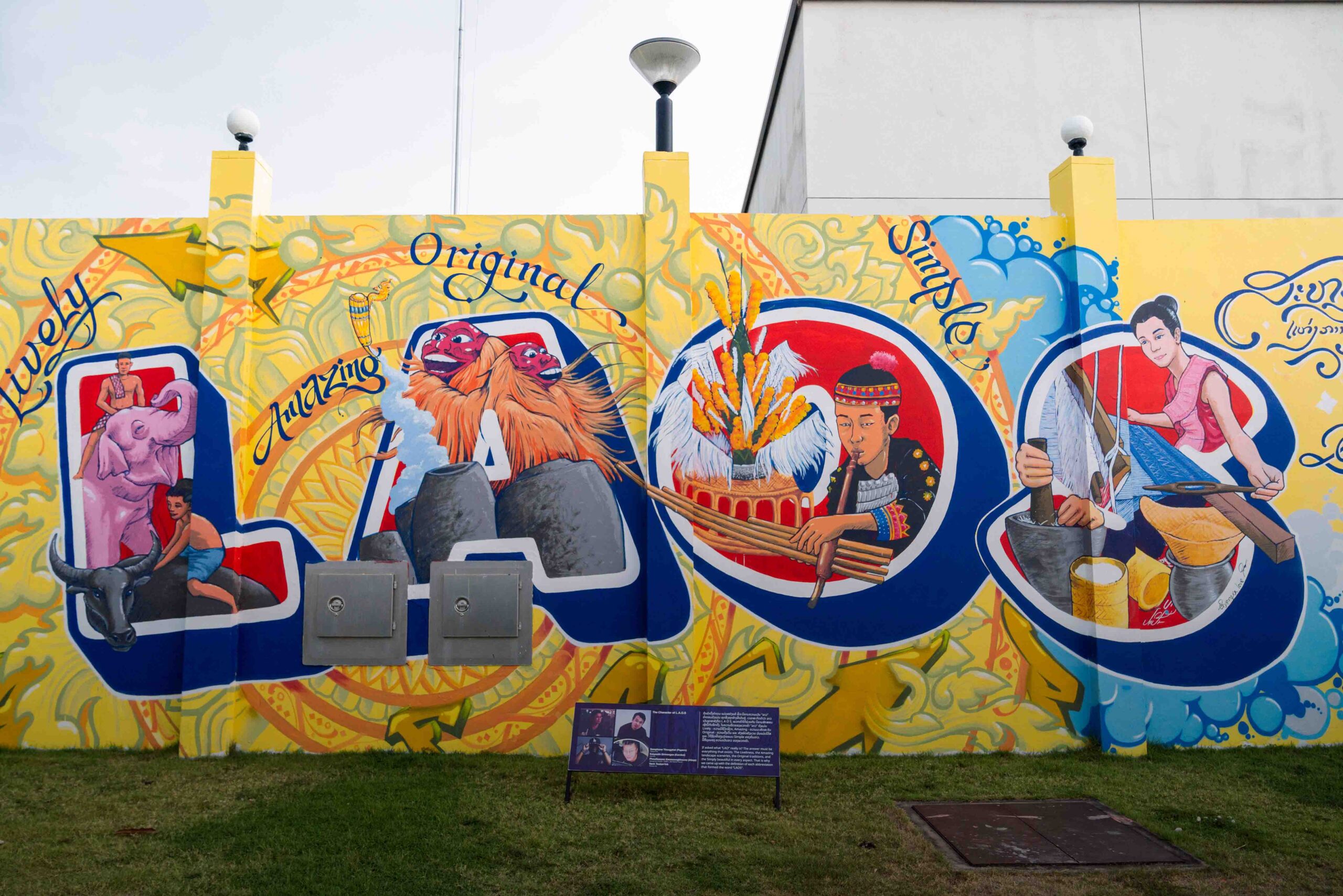New Murals Preserve the Past, Welcome the Future
On one of the small streets leading to the historic That Dam in the center of Vientiane, pylons, tall empty white walls, and the security presence of the American Center, have all generally deterred foot traffic. Now, those once-white walls are home to a series of six bright, colorful artworks, each standing more than two meters tall. “People don’t realize they can even come down this road,” says Peter Haymond, the U.S. Ambassador to Laos. “We hope that these murals will signal to both international tourists and local pedestrians that this road welcomes them. We hope it becomes a tourist destination, like That Dam itself. Come and take a picture, it’s okay.”
The murals celebrate 20 years of the Ambassador’s Fund for Cultural Preservation (AFCP) in Laos, a project aimed at maintaining Laos’ rich and varied cultural heritage. In swirling colors and a range of artistic styles, the murals depict the variety of Lao culture (both tangible and intangible) from across the nation’s provinces. AFCP projects – such as the preservation of Xieng Khouang’s Plain of Jars, Luang Prabang’s Wat Visoun (the so-called “watermelon stupa”), and the conservation of Buddhist archives – take center stage. A keen eye will also notice, tucked inside these murals, visual references to Vang Vieng’s rocket festival, Luang Prabang’s unique style of stencil art, and several lucky white elephants.
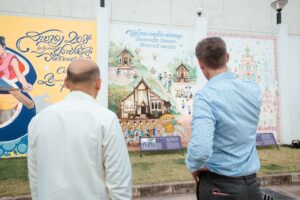
One of the goals of the murals, Ambassador Haymond says, is to externalize and document the interiors of ancient Lao places, particularly its temples, for easier access and greater appreciation. One mural even contains a reproduction of temple art showing foreigners arriving in Laos which, like the interlaced American and Lao flags, is a nod to the cross-cultural teamwork behind the AFCP.
The murals were created by a number of different artists from across Laos, including both traditional artists trained at the National Institute of Fine Arts and some contemporary artists. While the AFCP projects are aimed at preserving the cultural heritage of Laos’ past, these murals also incorporate the future in their style, content, and creation.
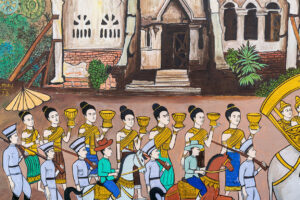
For graffiti artist Aleqs, whose mural contains both traditional elements and spray-painted graffiti-like tags, empty spaces like white security walls can feel like a missed opportunity. He says he hopes that the murals will convince locals to reconsider their stance on public art and that they will lead to a boom in public Lao art in general.
For some of the muralists, the opportunity to make such large pieces is a first, and a learning experience. “I’m used to working small,” says Karnkai, whose mural celebrates the many provinces of Laos.
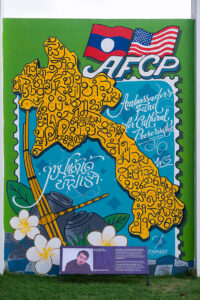
The centerpiece of the display is a collaborative mural, spelling out L.A.O.S. as an acronym: “Lively, Amazing, Original, Simple.” This acronym, too, appreciates the past while looking forward.
While the small road is certainly more colorful than it once was, there are still several empty panels adjoining the American Center that remain empty and white. “This is a work in progress. We’d like to see these walls filled, too,” Ambassador Haymond says.
“We hope that these murals will signal to both international tourists and local pedestrians that this road welcomes them.”
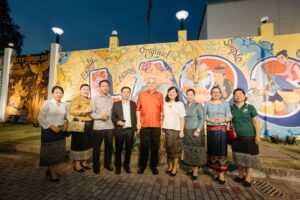
Text BY Bridget Dooley
PHOTOGRAPHS BY Phoonsab Thevongsa / The US Embassy



 ລາວ
ລາວ